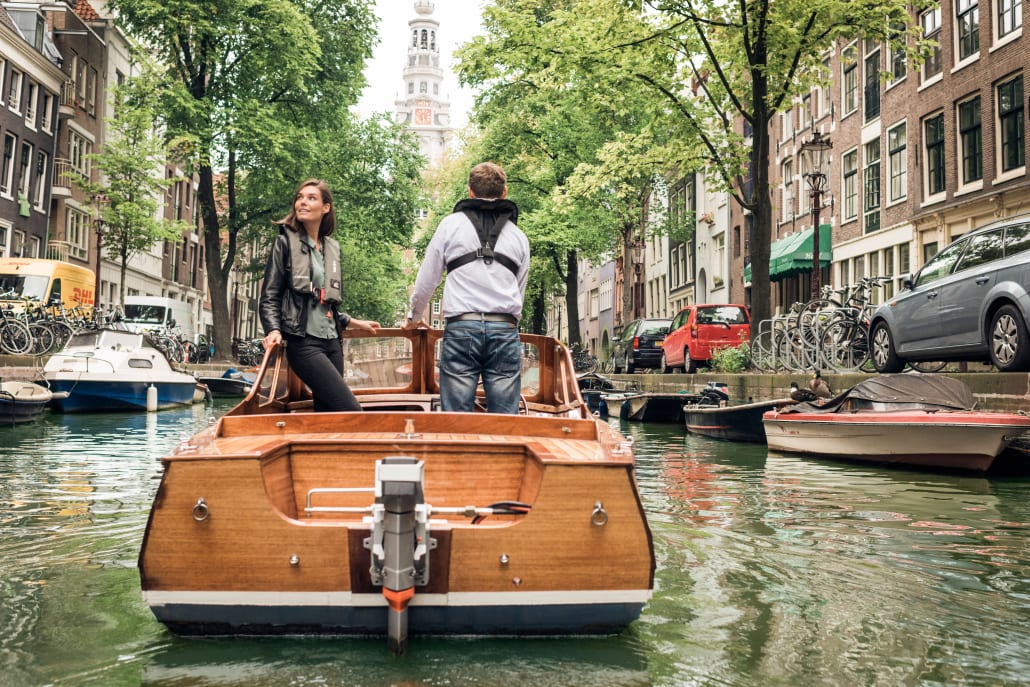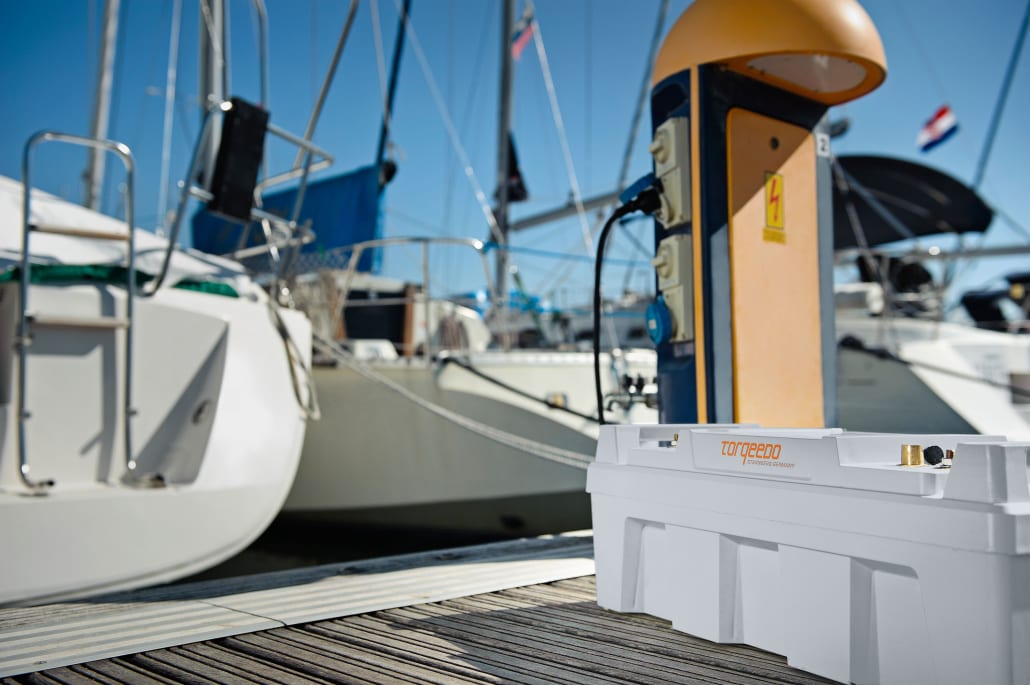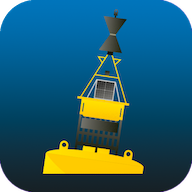What are the advantages and disadvantages of electric sailing?
Electric sailing is a growing trend in the world of pleasure craft, and it offers both advantages and disadvantages compared to traditional sailing with a petrol engine. In this article you can read more about the most important advantages and disadvantages of electric sailing, so that you can determine whether it is something that suits your sailing style.
Benefits of electric sailing
Firstly, electric sailing is much quieter than traditional sailing. This can be a great advantage if you sail in areas where noise pollution is a major problem, such as around houses or in protected nature reserves. Moreover, sailing with an electric motor is a much quieter and relaxing experience than with a laboring engine in the hold or behind you.

With an electric boat you can sail virtually unlimited through the canals (photo: De Stille Boot)
Second, electric motors are much cleaner than petrol engines. They produce no exhaust fumes, so there is no risk of air or water pollution. Not only is this better for the environment, but it can also reduce any concerns about maintaining your boat as there is no need to change or replace oil or other fluids (handy!).
Third, electric motors are much more efficient than gasoline engines. They have no losses due to heat or friction, so they use less energy. This can lead to lower costs for electricity compared to gasoline, and it can also mean your boat can run longer with the same amount of energy.
And of course, electric sailing can also be beneficial from a financial point of view. Although purchasing an electric boat is often more expensive than a traditional gasoline-powered boat, it can be cheaper in the long run because electric motors require less maintenance and are cheaper to run. At the time of writing, charging the battery is also slightly cheaper than filling the gas tank, but as we have seen over the course of 2022, that difference can quickly decrease.
Disadvantages of electric sailing
Of course, there are also some disadvantages to electric sailing. Firstly, the range is often more limited than with traditional boats. This is because electric motors have less power and the batteries run out faster than a gas tank. This means you'll have to take more time to recharge and you might not be able to sail as far as you'd like. Fortunately, there are now more than enough charging points in the Netherlands through which you can plan a route. Use our route planner and of course the map with charging points.

A battery on the charger on the jetty (photo: De Stille Boot)
It can also be more difficult to maintain your electric boat yourself compared to traditional boats. This is because electric motors and batteries are more complex technology and require special knowledge and skills to maintain and repair them. If you're not familiar with electrical technology, it can be more difficult to keep your electric boat in good condition and troubleshoot any problems. You can still disassemble and reassemble a diesel engine yourself, but electric boating can mean that you spend more money on professional maintenance and repairs, which can increase the total cost of your electric boat.
That is why it is important to consider whether electric sailing suits your sailing knowledge and experience before you decide to switch to an electric boat. If you are already familiar with electric technology or are willing to dive into it, electric boating can be a good choice. But if you prefer to sail traditionally, that's fine too. The most important thing is that you feel safe and comfortable on the water.
Fortunately, there are plenty of charging points for electric boats in the Netherlands, do you know where to find them? Be sure to look at our map with charging points for electric sailing.
Search for charging points
Electric sailing
Electric sailing is quickly becoming more popular in the Netherlands. There is a lot to be said for that: it is a lot calmer, quieter, cheaper and is also much better for the environment. The combination of batteries (heavy) and boats is also very logical: you can use the stored energy in a battery very efficiently on a boat. However, there are a number of things you should pay attention to when switching to electric sailing. We have collected them for you below.
Charging points for electric boating throughout the Netherlands (map)
This is how you plan a route (always a full battery)
